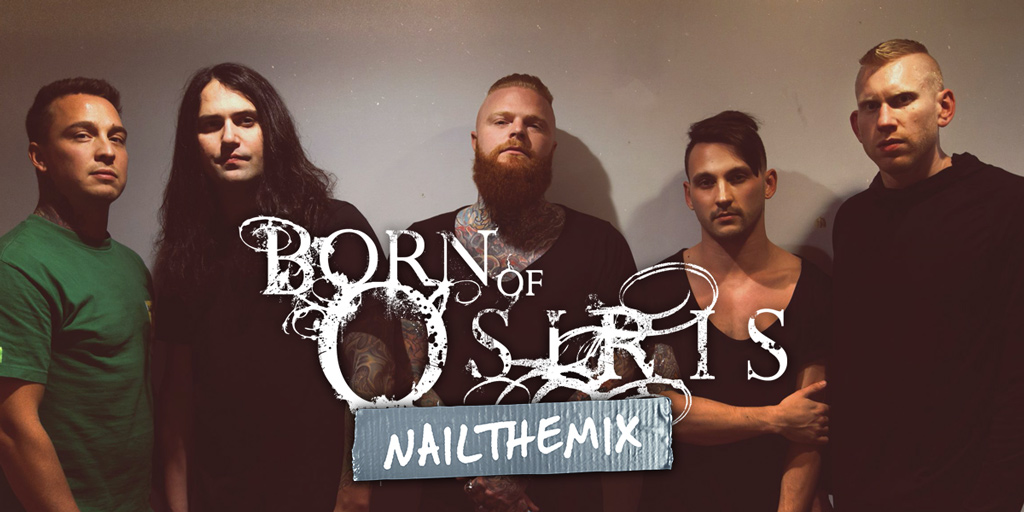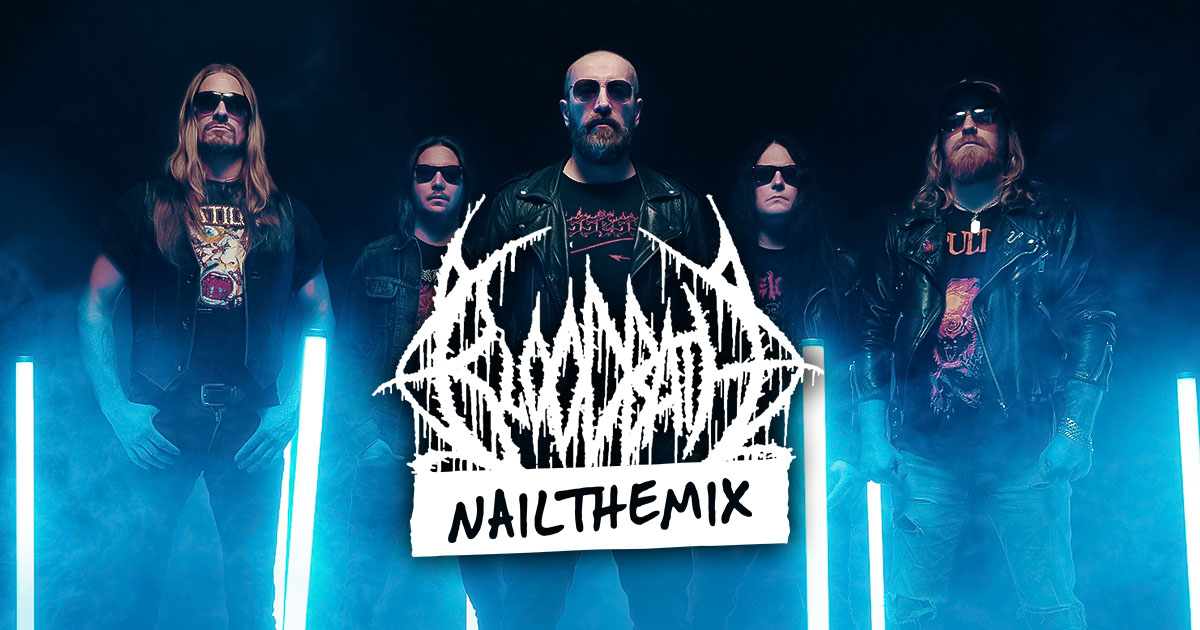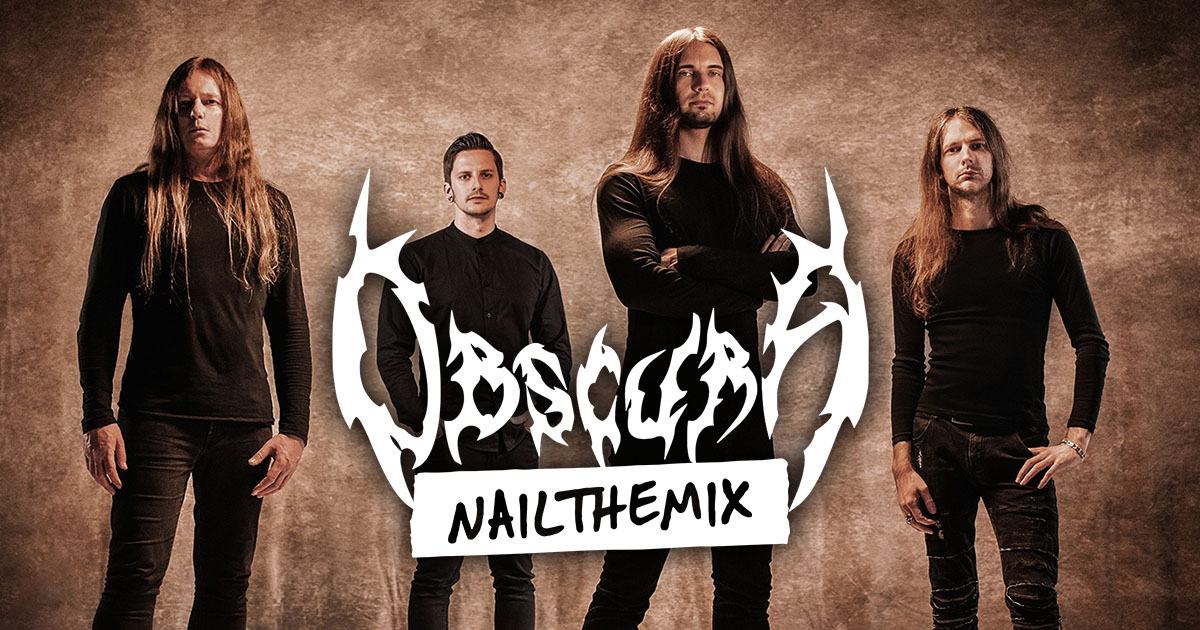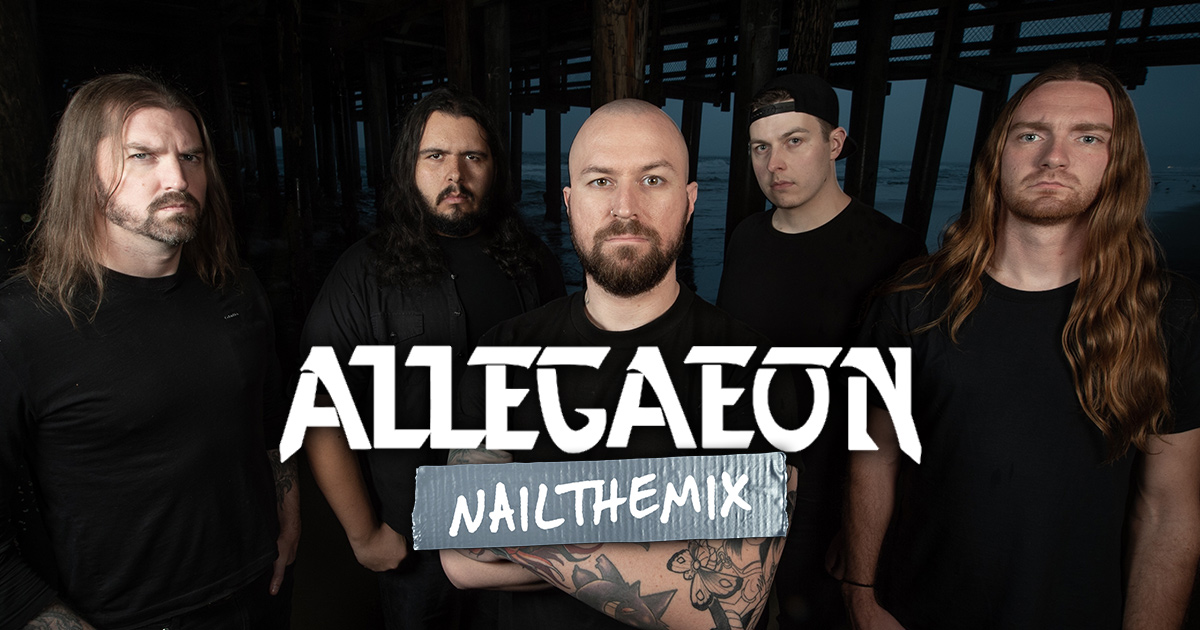
Born Of Osiris: Building a Brutal Bass Tone with Buster Odeholm
Nail The Mix Staff
Let’s talk about that elusive “wall of guitars.” It’s a sound we all chase in heavy music—a thick, cohesive, and powerful rhythm section that hits you right in the chest. But getting there isn’t just about quad-tracking guitars and cranking the gain. A huge piece of the puzzle, and one that often gets overlooked, is the process of recording metal bass guitar so it works perfectly with the guitars.
We got to see a master at work when Buster Odeholm (Vildhjarta, Humanity’s Last Breath) dialed in the bass tone from scratch for a Born Of Osiris track. His approach is a masterclass in how to make bass and guitar lock together to form a single, brutal entity. Forget wrestling with a muddy low-end; let’s break down Buster’s methodical approach to creating a tight, aggressive bass tone that serves the song.
The Foundation: Pre-Amp EQ in Context
One of the biggest takeaways from Buster’s workflow is where he starts: with the bass DI signal playing alongside the guitars. He’s not soloing the bass and trying to make it sound cool on its own. He’s immediately sculpting it to fit the mix, and he’s doing it before the signal even hits an amp simulator.
Carving Out Problem Frequencies
The first thing Buster does is listen for frequencies in the bass that are fighting the guitars. Instead of boosting things to add character, he starts by cutting the junk that gets in the way. He identifies and surgically removes:
- Harsh High-End Clank: That fizzy, clicky top end on a bass DI that can clash with the guitar attack and cymbals.
- Muddy Mid-Range Honk: He zeroes in on resonant frequencies around the 700-800Hz range that were clouding up the guitars.
By using an equalizer before the amp, he’s sending a cleaner, more controlled signal into the distortion stage. The magic here is that the more problems you solve at the source, the louder you can push the bass in the mix without it turning into a muddy mess. It’s a simple change that makes a massive impact on the clarity of your low end.
Building the Core Tone: Subs, Dynamics, and Distortion
With the DI signal cleaned up, it’s time to build the actual tone. Buster’s process is logical and layered, ensuring each stage adds power without sacrificing control.
Taming the Sub-Bass
Before anything else, it’s crucial to manage the extreme low end. For this track, which isn’t in an ultra-low tuning, Buster sets a high-pass filter (HPF) right around 35Hz. This tiny move is critical. It cuts out inaudible sub-sonic rumble that eats up headroom and can make your speakers work overtime for no reason. This is a key step in how to mix low end for a tighter, more focused punch.
Leveling the Volume with Compression
Next up is dynamic control. To make sure the bass provides a rock-solid foundation, every note needs to be consistent and powerful. Buster uses processing to even out the volume of the performance, ensuring no notes get lost and no peaks jump out too aggressively. An audio compressor is perfect for this, gluing the performance together so it sits perfectly under the chugging guitars.
Adding the Grit
Only now, with a clean, controlled, and dynamically consistent signal, does Buster add the distortion. He uses a similar layering philosophy when crafting a brutal thall bass tone too. By layering grit on top of a solid foundation, you get all the aggressive character you want without the unprocessed mud and clank that can ruin a bass tone. This ensures the distortion is musical and powerful, not just noisy.
Adding Dimension and a Professional Sheen
The tone is almost there, but a few final touches take it from good to great.
Tightening the Performance with a Gate
Buster noticed the bass tone had a bit too much room sound or tail, making it feel loose. The fix? A simple noise gate. By gating the bass, he tightens up the performance, making it punchier and ensuring it locks in perfectly with the tight, palm-muted guitars. Every note hits hard and then gets out of the way.
Creating Width and Space
To give the bass its own space without interfering with the guitars, Buster uses a clever stereo trick. While keeping the low frequencies firmly in the center (a must for powerful mixes), he adds a very short stereo reverb to the mids and highs. This subtle move gives the top end of the bass a sense of dimension and width, helping it feel big without washing out the mix or fighting the mono-centric kick and snare.
Learn How The Pros Build a Mix From Scratch
Watching Buster Odeholm build this brutal Born Of Osiris bass tone piece by piece shows just how methodical and intentional modern metal mixing is. It’s about making smart decisions that allow each element to be powerful without stepping on everything else.
These techniques are things you can apply to your own mixes right now. But seeing them applied in real-time, on a real session, and hearing the “why” behind every single move is what separates the pros from the rest.
Born of Osiris on Nail The Mix
Buster Odeholm mixes "The Other Half Of Me"
Get the Session
At Nail The Mix, you can do exactly that with our monthly sessions. We give you the multi-tracks from massive bands like Born Of Osiris, Allt, and Oceano and let you watch the original producer mix the song from scratch. You can see precisely how Buster gets the bass and guitars to lock together, how he sets his compressors, and how he automates the track to perfection.
If you’re ready to see the full session and get your hands on these multi-tracks, check out the Born Of Osiris “The Other Half Of Me” session. Stop guessing and start learning the proven techniques that the pros use by exploring our full range of in-depth mixing courses.
Get a new set of multi-tracks every month from a world-class artist, a livestream with the producer who mixed it, 100+ tutorials, our exclusive plugins and more
Get Started for $1





